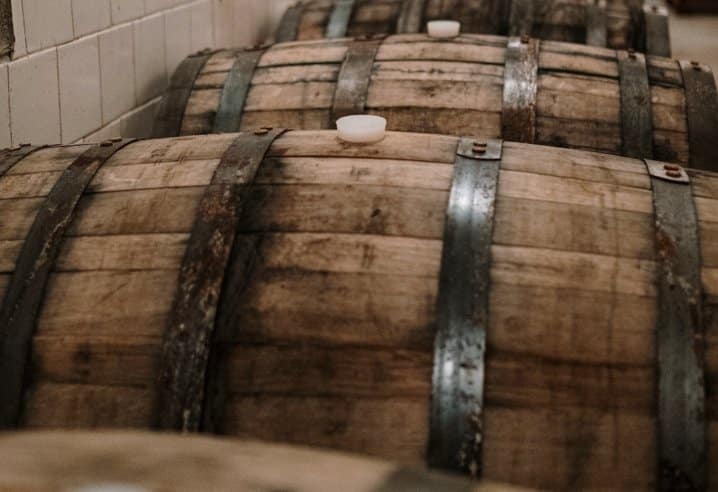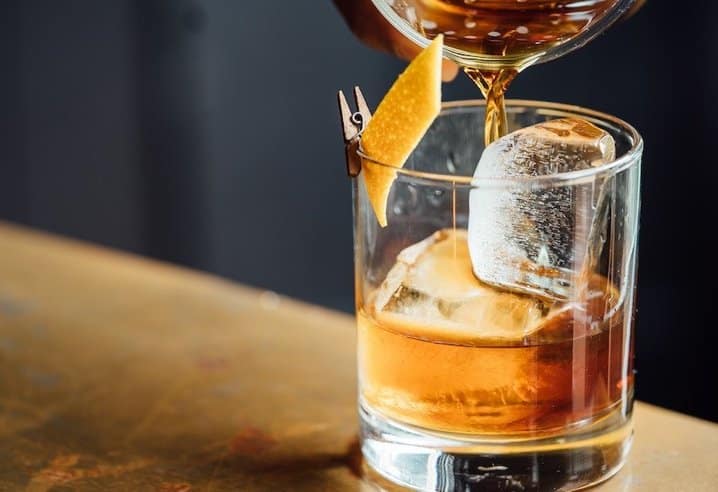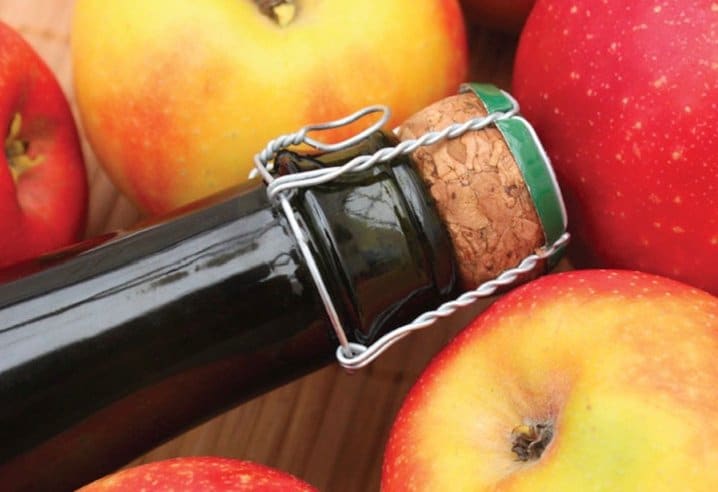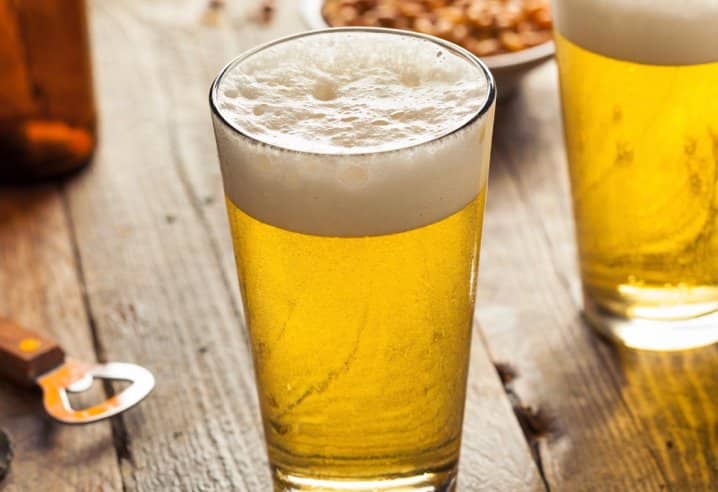Introduction to craft spirits, wine, cider, and beer!
One of the biggest challenges as a consumer in the world of alcohol is answering the questions: What is Craft? And, is this particular product really craft beer? Or craft wine or craft spirits or craft cider or craft whatever the heck else you’re drinking? If you’re a tippler who cares about drinking craft—you probably are if you’re a fan of The Crafty Cask—these questions can be frustrating. Especially when it comes to shopping for or ordering your next drink.
We personally think that all smart, savvy tipplers choose to drink craft and sample locally as much as possible. So, let’s provide a little drink craft clarity to help you along the way.
What is Craft?
Drink craft, drink local & drink the world are all critical components of our daily mantra here at The Crafty Cask. So we thought it was about time we talked a little about why that is. You see, we’re on a mission to improve the drinks, experiences, and lives of those of us who enjoy a drink from time to time – tipplers, as we affectionally like to call ourselves.
For us, craft alcohol is any alcohol that requires some level of art along with the science, is made by the maker, uses real ingredients, and is independently owned. Let’s take a minute to break each element down and explain why it’s critical to answer ‘what is craft?’

Requires some level of art along with the science
You may notice that we don’t have a size requirement for our definition of craft. Honestly, this is rare. When someone asks us ‘what is craft?’ our answer is rooted in the art and hands-on nature of making it. So this “art” requirement is our proxy for size.
Essentially, it means if a maker can just push a button, keep an eye on a computer screen, and make the booze with no human interaction, then it’s not craft. Because that is how mass-produced beverages are created. Sure, there’s quality control, but they have the production down to such a science that the batch outputs are identical which means it’s no longer artisan or craft.
Craft, on the other hand, requires a person to taste, smell, or touch things to decide when to make a cut when making craft spirits. Or if the craft beer has been in the barrel long enough to be bottled. How about if that block of grapes should be picked now or later based on the wine they’re hoping to create. Should this season’s apples be made into a single varietal cider or a blended cider?
That is the art of craft. It often means the overall size of the operation will be smaller. Why? So the maker can be hands-on and intimately familiar with each batch. If they can preserve the art and make millions of cases then, hey, more power to them. So, no explicit size requirement from us.
Made by the maker
If you’re not making the booze yourself, then how is it craft? Yes, you can buy booze that is craft made, bottle it, market it, and sell it. And I’ll likely agree that the juice in the bottle is craft. But that brand is not a craft brand or a craft brewer or craft distiller, etc… They are a marketing and sales company for the juice that they have purchased. I’m not saying there’s anything wrong with that or it won’t be delicious, but in our book you are not a craft maker or brand. We’re looking for handcrafted, personally loved and created products here—not misleading marketing.
That doesn’t mean you can’t hire someone to help you make it . Or even have someone else make it entirely as long as you, as the consumer facing brand, are part of the process and decisions that lead to your final product. Why would a craft maker hire it out? Well, early on distilling or fermenting equipment can be capital intensive. So it sometimes makes more sense to leverage what others already have. Or, if it’s your first time making gin, for example, you may want to hire someone so you create exactly the gin flavors you are hoping to achieve while you learn along the way.
But simply placing an order for something already made and slapping a label on it? Nope – not craft spirits or craft beer or any other kind of craft in our book.
Uses real ingredients
Next, in order to answer the question ‘what is craft?’ in the affirmative, the juice in the bottle should be made from real ingredients that you would expect to be there. The maker is proud of those ingredients, which means he or she is making a final product in the spirit of showcasing (not hiding or working around) the ingredients that they carefully chose and sourced.
Wine should be made from grapes and yeast. Craft cider? Apples and yeast. Craft beer? Grains and yeast. Craft spirits? Sugar source and yeast.
Seems pretty straightforward to us. But have you ever wondered why alcohol is one of the only ingestible products not required to have ingredient information listed? I wager you can thank wine lobbyists for that.
We’re going to pick on wine as an example here, but this cuts across all alcohol categories. There are a lot of supposed craft wines which have unlisted ingredients that read like a sci-fi novel. I’m not saying these ingredients are harmful (though if not handled properly and above certain concentrations can be) but they’re simply not necessary.
When these additional ingredients are used, it’s often a modernized short-cut or correction. To make more, faster, to make a style not native to that region’s climate, or to correct something that went wrong in the grape growing or winemaking process. The primary focus is on cost-cutting, sales potential, and speed…not quality or pride in the craft. If they’ve been able to make booze since the beginning of time with ingredients we can pronounce and understand, we can certainly expect the same of modern producers.
Independently owned
Last, but certainly not least, craft alcohol is independently owned. If there’s a big corporation that has a stake in the operation, then it’s moving away from craft. I say moving away from because, of course, a 5% stake is very different than a 45% stake. Honestly, this is often some of the hardest information to find since craft makers know it is smart to keep big booze investments hidden. I don’t know about you, but when I spend my hard earned cash, I like to know exactly who it’s going to. Especially when I intend it to support a small business and the local community.
So while it’s hard to always get this one right or keep up with the latest investments and acquisitions, we try our hardest. Our intention is to only support independently owned craft makers. To be clear, though, we have no ill will towards makers who pursue buy-outs or corporate investments.
You can read more about our philosophy on selling out in our article on Anchor Steam Brewing’s acquisition by Sapporo Holdings.
They know their business and goals best. We just feel that once they have big marketing budgets behind them they don’t need our support nearly as much as craft makers still trying to succeed.
How do I ensure I'm buying craft?
First, check out our curated shop of our favorite online retailers for great craft alcohol across all categories.
Beyond that, with so many definitions floating around out there it’s unlikely we’re ever going to land on a clear, consistent definition of craft. What is important is that those of us who care about craft, however we may choose to define it for ourselves, are able to identify and find it so we can vote with our dollars. So, if supporting smaller, craft makers is important to you what should you do?!
Skepticism Is Smart
First, and foremost be a skeptical, inquisitive consumer. Just because the word craft is used or the label looks crafty or says something that indicates craft (small batch, artisan, micro, hand-crafted, etc…) does not mean it is craft. Terms like these are rarely regulated, and instead often used in misleading marketing, so take them with a grain of salt.
Use The Tools At Your Disposal
Second, look at the back label. You’re looking for “distilled by” for craft spirits, “brewed by” for beer, and “produced by” for wine and cider (not for spirits or beer).
For beer the back label is a little less helpful. Take 312 Urban Wheat Ale from Goose Island Beer Company, for example. Their back label says,
“Brewed and packaged by Goose Island Beer Co. in Chicago, IL, Baldwinsville, NY, and Fort Collins, CO.”
The beer is named after the Chicago area code and it says it’s brewed in Chicago by Goose Island. Feeling pretty good it’s craft, right? Unfortunately not. Used to be, but Anheuser-Busch purchased it in 2011. Which is also why it says it’s brewed in those two other locations…because honestly, pretty much none is brewed in Chicago anymore even though it’s listed first. Tricky, tricky. When in doubt, do a quick google search of “Who owns…”
Luckily, since this is such an issue in craft beer, there are tools like the Independent Craft Brewers Seal, which almost 80% of craft brewers now have on their labels, and the CraftCheck app to help you out before choosing your next six-pack.
When it comes to back labels in spirits, what you want to avoid is anything that only says “bottled by” or “produced by.” That means it’s essentially just a marketing play for that product. The brand you see on the front is not the brand that actually makes it, although they may make other products in their portfolio. Since spirits do tend to be a little more complicated regarding the ‘what is craft?’ question, we walk through it more deeply in our article, How Craft Is The Bottle You’re Drinking?
Craft Spirits
With craft spirits the confusion deepens as there are two industry associations with different definitions for what qualifies as craft.

American Craft Spirits Association Definition
The American Craft Spirits Association defines craft spirits as:
- A product produced by a distillery who values the importance of transparency in distilling, and remains forthcoming regarding the spirit’s ingredients, distilling location, and aging and bottling process.
- A distilled spirit produced by a distillery producing fewer than 750,000 gallons annually.
- A spirit produced by a distillery that is independently owned and operated, with more than a 75% equity stake in their company and operational control.
American Distilling Institute Definition
The American Distilling Institute defines certified craft spirits as:
- The spirit must have been run through a still located in the DSP (distilled spirits plant) listed on the TTB-approved label, and the label must state “Distilled By” followed by the name of the DSP.
- Less than 25% of the distillery is owned or controlled (or equivalent economic interest) by alcoholic beverage industry members who are not themselves craft distillers.
- Maximum annual sales are less than 100,000 proof gallons.
- Craft distilled spirits are produced to reflect the vision of their principal distillers using any combination of traditional or innovative techniques including fermenting, distilling, re-distilling, blending, infusing or warehousing.
What's the difference between craft and small batch?
While neither craft or small batch are legally regulated, meaning anyone can slap either word on their label, typically small batch is referring to spirits produced from a relatively small number of selected barrels (or a single barrel). Small batch spirits are typically positioned for the upper-premium market of spirits since there is only a small amount being made. But remember, just because it is small batch does not mean it is craft.
Craft Wine
According to Craft Wine Association, certified craft wine is a commercially-available, limited-production wine with small production runs.

Small
Production runs (likely of each wine) of 5,000 cases or fewer.
Authentic and traceable
Wines must be authentic and traceable to their roots, meaning producers that buy grapes need to know where their growers source their fruit to qualify for this designation.
Find and try craft wine
One of the largest collections of truly craft wine can be found at NxtCrush. Every wine on NxtCrush is certified by the Craft Wine Association as a Certified Craft Wine.
Craft Cider
While the American Cider Association hasn’t yet put stakes in the ground as to what is craft in the world of cider, the federal alcohol laws generally treat cider as beer. Even though cider is made, and much more like, wine. That being said there are no federal or legal definitions of craft in cider.
So for cider, we stick with our standard definitions of what we consider craft, outlined above.

What is cider?
Cider is produced by fermenting apples with no other added fruit or botanical adjuncts. Beyond traditional cider there are a few fun subcategories to explore:
- Fruit cider – In addition to the primary ingredient of fermented apples or pears, fruits are included,
such as cherries, blackberries, currants, etc. - Botanical cider –In addition to the primary ingredient of fermented apples or pears, plant-based ingredients are included such as hibiscus, hops, spices, vegetables or herbs.
- Dessert cider – Production methods vary widely by sub-styles:
- Ice Cider – made from freeze-concentrated juice. Note that it can only legally be labeled as ice cider if the freezing is done using natural cold.
- Pommeau – made from wood-aged apple brandy combined with fresh or very lightly fermented juice.
- Apple/pear Brandy – apple or pear distillate aged in wood.
- Apple/pear Eau de Vie – apple or pear distillate without wood aging.
Adapted from American Cider Association’s Cider Lexicon
What is perry?
Perry is produced by fermenting pears with no other added fruit or botanical adjuncts. Pear cider, on the otherhand, is produced by fermenting pears and apples or other added fruit.
Adapted from American Cider Association’s Cider Lexicon
Resources to find and try craft cider
- There is an amazing selection of craft ciders you can buy online here
- And one of our favorite craft cider clubs is the Northwest Cider Club..you can see one of our unboxing videos here.
Craft Beer
The Brewers Association defines craft brewers as small and independent brewers according to the following definitions:

Small
Annual production of 6 million barrels of beer or less (approximately 3 percent of U.S. annual sales). Beer production is attributed to a brewer according to rules of alternating proprietorships.
Independent
Less than 25 percent of the craft brewery is owned or controlled (or equivalent economic interest) by a beverage alcohol industry member that is not itself a craft brewer.
Resources to ensure you're drinking craft beer
- Look for the Independent Craft Brewers Seal, which almost 80% of craft brewers now have on their labels
- CraftCheck app can help you out before choosing your next six-pack.
- For the best assortment of craft beer (and cider!) delivered to your home and sold in singles so you can mix and match your next six-pack head on over to CraftShack
Join Tippler Nation
for exclusive access to craft alcohol events, products, recipes, education & fun for craft drinkers. You'll be the smartest, savviest tippler around.
tip•pler
noun /ˈtip(ə)lər/ #tippler
a habitual drinker of alcohol
one who enthusiastically explores, savors, & supports artisan alcohol
Possibly of Scandinavian origin, such as Norwegian dialectal tipla "to drink slowly or in small quantities."